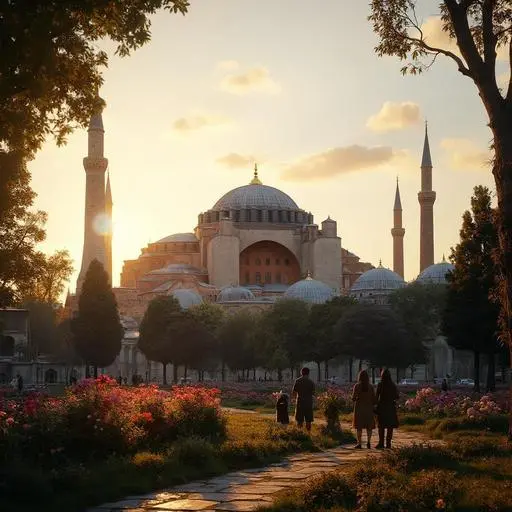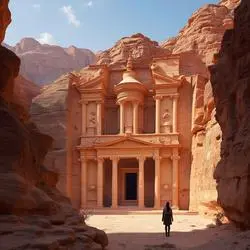What are famous preserved structures around the world?

Table of Contents
Table of Contents
- 2.1 The Coliseum
- 2.2 The Pantheon
- 2.3 The Hagia Sophia
- How Does Ancient Architecture Influence Modern Urban Development?
- What Are the Benefits of Preserving Cultural Heritage Sites?
- 4.1 Economic Impact
- 4.2 Educational Value
- How Are Sustainable Practices Integrated in Preservation Efforts?
- What Are Some Adaptation Examples of Preserved Structures for Modern Use?
- What Role Does Technology Play in the Preservation of Historic Sites?
- What Are the Challenges Faced in Preservation Efforts?
- How Can Community Engagement Enhance Preservation Initiatives?
- Conclusion
Note:
You can link to each section by using the anchor tags provided in the Table of Contents to navigate to specific topics within the blog post for a more structured reading experience.
TL;DR
TL;DR:
- Famous preserved structures:
- Coliseum (Rome): Iconic ancient engineering, attracts millions.
- Pantheon (Rome): Huge dome, showcases Roman architectural genius.
- Hagia Sophia (Istanbul): Blend of cultures, formerly a church and mosque, now a museum.
- Benefits of preservation: Maintains community identity, boosts local economies through tourism (e.g., Machu Picchu).
- Sustainable practices: Eco-friendly materials, energy-saving technologies (solar panels, LED lighting).
- Adaptive reuse example: Diocletian’s Palace (Croatia) combines shops, homes, and cafes.
- Technology in preservation: IoT sensors and AI monitor conditions, 3D modeling and VR create digital replicas.
- Challenges: Weather impacts, funding issues, and logistical complexities.
- Community engagement: Enhances preservation through local involvement and pride.
Introduction
Are you ready to explore some of the world’s most iconic preserved structures? These buildings tell stories of our past while inspiring our design dreams. From ancient wonders to modern masterpieces, you'll see how history blends with creativity. Join me as we take a journey through time and space, showcasing these amazing sites. Get ready to be inspired for your own home remodeling projects!
What Are Some Examples of Famous Preserved Structures and Their Significance?
The Coliseum in Rome tells an epic story of fierce gladiators. Built nearly 2,000 years ago, it stands as a marvel of ancient engineering and Roman culture. This iconic structure draws millions who want to walk through history.
Next, the Pantheon amazes people with its huge dome. It showcases the genius of Roman architects and engineers. The building's perfect balance and beauty reflect the great minds of its time.
In Istanbul, the Hagia Sophia is a stunning blend of cultures and faiths. Once a church, then a mosque, and now a museum, it shows architectural brilliance. Its vast dome and rich mosaics span different eras.
Preserving these gems keeps history alive. It allows us to see human art and skill across time. They teach us about our past and remind us of our common roots.
How Does Ancient Architecture Influence Modern Urban Development?
How do ancient architectural techniques influence modern building practices? Ancient methods teach builders about balance and harmony. Many old structures used local materials and effective designs. They know how to fit into the natural environment. Builders today use these old ideas to save energy and resources.
Modern urban design often copies ancient styles. In architectural history, we see arches and columns first. They were strong and simple. Today, these elements appear in skyscrapers and public buildings. This shows the power of ancient design in today's world.
Lessons from ancient builders are everywhere. They show how to blend beauty with strength. Ancient cities were also planned with people in mind. Wide roads and public spaces were key. These ideas continue to shape urban areas now.
When we study the influences of preservation on tourism, we learn to respect the past. Modern developers gain insight by embracing history alongside progress.
What Are the Benefits of Preserving Cultural Heritage Sites?
Cultural heritage sites protect community identity. They tell us stories from our past. These sites show us where we come from. Preserving these places helps us feel connected to our roots.
Such heritage sites boost local economies. They attract tourists who spend money in the area. This creates jobs and supports local businesses. Tourism from these sites helps the whole community grow and thrive.
A well-known example is the preservation of Machu Picchu. This site helps people learn about the Inca culture. It draws many visitors each year, who help the local economy. Preserving it has brought pride to the Peruvian people.
Restored sites also teach future generations about history. They inspire us to value and guard our culture. By preserving these sites, we keep our history alive and improve our lives now.
How Are Sustainable Practices Integrated in Preservation Efforts?
Sustainable methods reshape how we conserve historic structures. Builders use eco-friendly materials that match old designs. We choose products like recycled wood and brick. This keeps the look right while protecting the planet. When restoring, we save energy with smart tools and plans. For example, installing solar panels can help power a building. This reduces electricity use without changing how it looks.
Modern technology also plays a big role. Sensors track a building’s condition to warn us about problems early. This helps keep repairs small and less costly. Efficient systems like LED lighting replace old fixtures, saving energy. These changes support both the building's history and the earth. Preserving history with care ensures these treasures last for future generations. For more on innovative practices, explore this external link.
What Are Some Adaptation Examples of Preserved Structures for Modern Use?
Historic buildings can serve modern needs by preserving their charm while improving functionality. A perfect example is Diocletian's Palace in Croatia. Originally a Roman palace, it now mixes shops, homes, and cafes. These spaces blend old and new, offering a lively urban experience.
Adaptive reuse helps balance preservation with contemporary function. It keeps the building's essence yet fits today’s needs. This approach respects history while making spaces usable and relevant.
This practice offers significant benefits. Economically, it rejuvenates areas and creates jobs. Architecturally, it saves energy by reusing materials and cutting waste. Socially, it maintains local identity and community fabric. Each building tells a story, connecting past and present.
Preserving structures allows us to honor history and provide thriving spaces. Successful adaptive reuse requires creative design and a respect for the past. This approach helps meet both today’s needs and cares for treasured places.
What Role Does Technology Play in the Preservation of Historic Sites?
Technology helps us keep historic sites strong and safe. Tools like IoT and AI are vital. IoT sensors track temperature and humidity changes in structures, warning us of potential damage. AI processes this data rapidly, helping experts make fast decisions. Big data analytics predict future wear and tear on buildings by analyzing patterns and trends from vast datasets.
For preserving our history accurately, we use 3D modeling and virtual reality. This technology creates digital copies of sites. People worldwide can explore these sites as if they were there, helping spread knowledge and appreciation.
In the material sciences, new preserving methods extend the life of structures. Engineers use advanced materials to repair buildings without damaging their historical charm. This approach keeps the old beauty while ensuring longevity.
By mixing these technologies, we protect cultural sites better than ever. Using modern tools, I ensure these treasures are preserved for future generations.
What Are the Challenges Faced in Preservation Efforts?
Preserving old structures is not easy. One big challenge is the impact of weather. Rain and wind can harm these buildings over time. Climate change makes these problems worse. Heat and cold can crack walls and weaken roofs.
Another issue is money. It takes a lot of money to fix old structures. Getting this money can be hard. There are many rules for keeping old buildings in good shape. Following these rules can make the work cost more.
Logistical problems also play a role. Workers must safely update parts like wiring and plumbing. But they must do this without changing how the building looks. Balancing safety and history needs careful planning.
In summary, preserving history has many challenges. Weather, money, and logistics are just a few. Each building needs a special plan to stay strong and true to its past.
How Can Community Engagement Enhance Preservation Initiatives?
Community plays a big role in saving old buildings. Local people keep history alive by joining hands. Together, they protect places that hold stories of the past.
One example is the Chauvet-Pont-d'Arc Cave. It became a World Heritage site thanks to local efforts. By working together, townspeople helped preserve the cave's ancient drawings. Without their voices, this treasure might have been lost.
Local involvement in heritage projects has many social benefits. People get more attached to their neighborhoods. They learn about their roots and connect with others who share this bond. It makes the community feel proud and inspired to do more.
When neighbors take pride in their history, they create a sense of shared responsibility. Together, they stand to preserve what is unique and important. Community engagement makes preservation not just possible, but meaningful and lasting.
Conclusion
To achieve your dream home, focus on expert construction solutions. Preserve your home’s historic charm while adding modern touches. Expand space with additions and ADUs for better living. Create luxury outdoor areas for enjoyment and relaxation. Remember, it’s about blending comfort, style, and functionality. With the right approach, your home can truly reflect your vision. Let’s turn your ideas into reality. Your perfect space is within reach.




